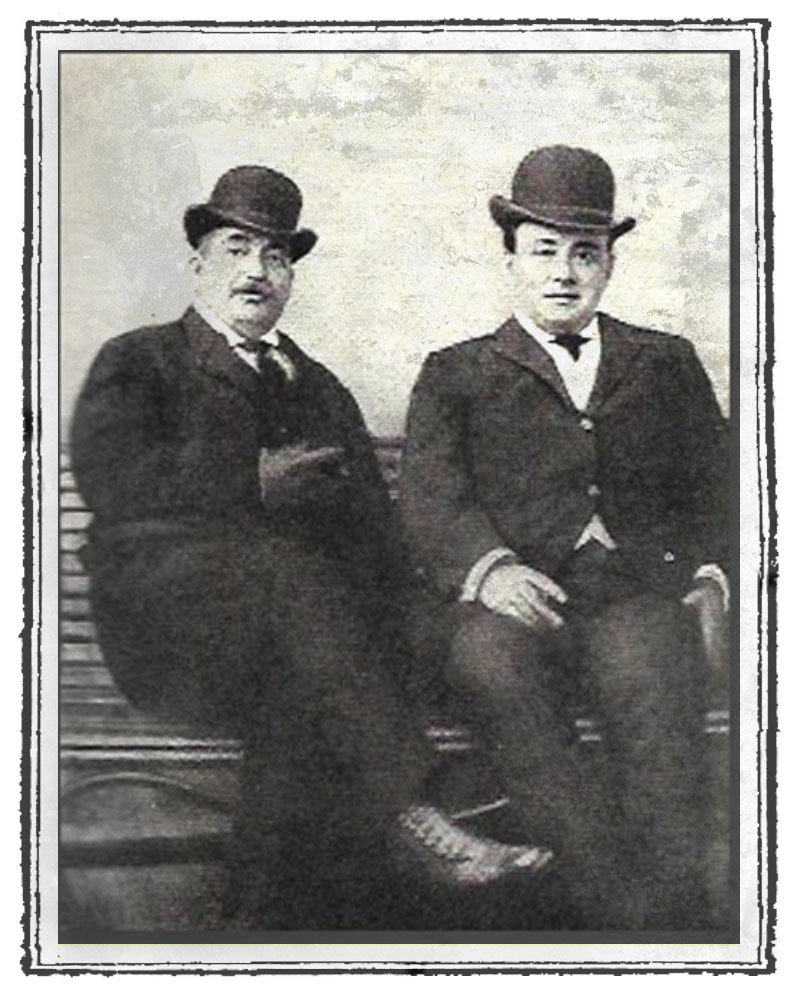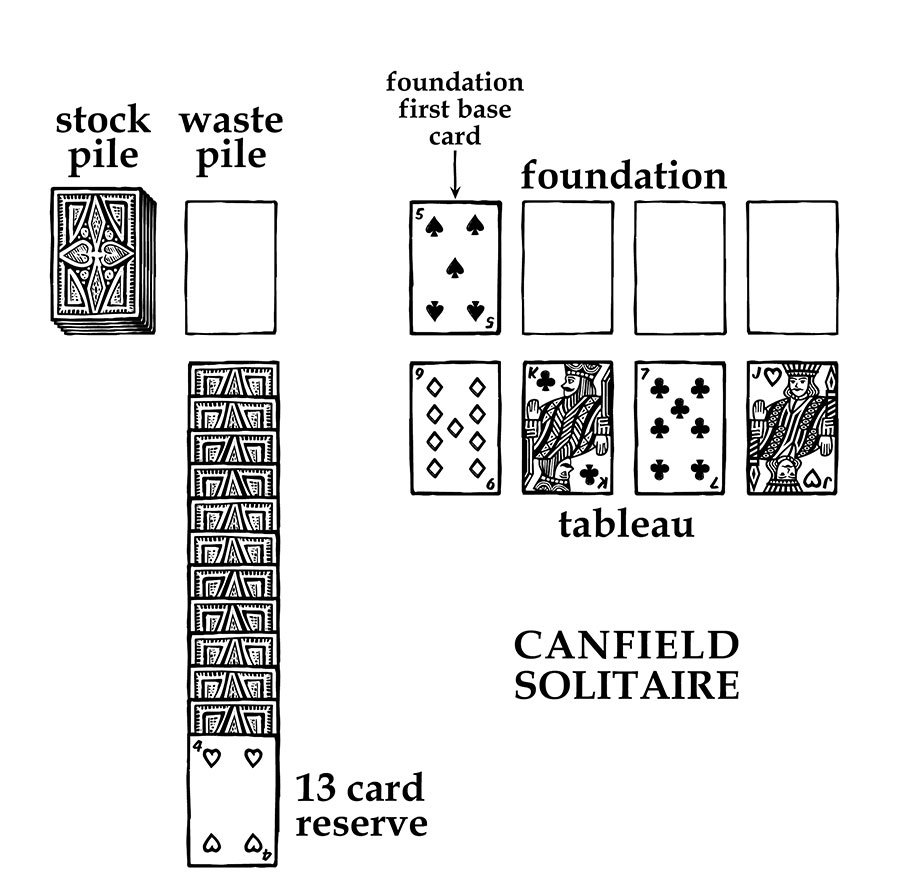Canfield Solitaire is named after Richard Albert Canfield, the “Prince of Gamblers” who lived in New York at the end of the 19th century. Although the public calls the game “Canfield,” the original name is Demon Patience or Fascination. At the beginning of the 20th century, when Canfield ran his famous Casino in Saratoga Springs, he might have offered this form of Solitaire to his clientele. However, it is doubtful that he would have invented the game, many believe.

Canfield Solitaire Rules
The rules of Canfield Solitaire have been changed over the years, contributing to confusion about the game’s name and how it is played. The rules described below can be seen as the rules of Modern Canfield. These rules are based on author Morehead’s explanation in “The complete book of Solitaire.” Besides omitting a gambling score, there are other differences in the Modern Canfield Solitaire game rules now compared to how they used to be played in Gambling Houses. You can read more about that at the bottom of this page.
The Object of the Game
The object of Canfield Solitaire is to play all cards, in ascending sequences, to the Foundation piles. In modern Canfield, there is no scoring. You win when you manage to play all cards to the Foundation.
(Many people argue that this game should be called Fascination or Demon, the original name without the money scoring element.)
Dealing the cards – Canfield Solitaire Setup
Canfield Solitaire is played with a deck of 52 cards.

- The first 13 cards are dealt face down into a pile on the left called the Reserve, revealing the top card of this pile. This card is available to play to the Foundations or the Tableau.
- Deal the next face-up card to the Foundation. This can be any card of any suit; this determines the other Foundations in that they must now start with the same card of the other Suits. (for example, if this card is a 4, all other Foundations must also begin with a 4.)
- The following four cards are dealt face up to form the Tableau (4 rows.)
- The other cards left from the deal make up the Stockpile (face down.)
Canfield Solitaire Gameplay
You must play cards sorted per suit to the Foundation’s piles in ascending order.
Cards at the Tableau need to be played in descending order and alternating in color.
When you start the game, you have three options:
- Move cards between two rows of the Tableau (descending in order and alternating in color)
- Move the top card from the Reserve to the Foundation or to the Tableau (if possible)
- Move a card from the Tableau to the Foundation
The top card of the Reserve is exposed and available to play according to the applicable rules. When this has been played, the next card from the Reserve may be turned over, becoming available.
Initially, the cards from the deck are turned over in sets of 3, with the exposed top card always available to play. Canfield Solitaire is also played in the 1 card draw version, whereby you only turn over 1 card.
You must fill an empty space with the top card of the Reserve. If the Reserve is empty, you can play the first card from the Waste Pile. In this case, you can keep the empty space open as long as you wish.
Differences between Modern Canfield Solitaire vs. Gambling House Solitaire
When you read the modern rules and compare them to how Gambling House Solitaire used to be played in gambling houses, there are some significant differences.
- First, in modern Canfield Solitaire, there is no money scoring anymore; it is not mentioned in books or online solitaire games.
- In modern Canfield Solitaire, “Worrying Back” is allowed, which was not in the original gambling version.
- Another significant difference is that in modern Canfield, the first card of the Foundation is the first card dealt directly after the Reserve is dealt (so the fourteenth card), no matter what card this is. The Foundation is then built by playing cards of the same suit in ascending order. So after a three comes a four, then a five, etc. However, because the base card is random, the Foundation piles must be built up continuously. So after a K on the Foundation, you place an Ace until all suit cards have been placed on the Foundation. If the base card is a 4, the game ends when all 3s of all Suits are on the Foundation. However, with Gambling House Solitaire, you always have to start building the foundations with an Ace. (as with Klondike)